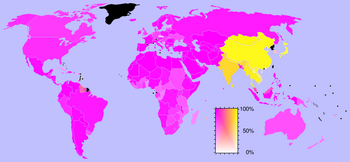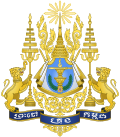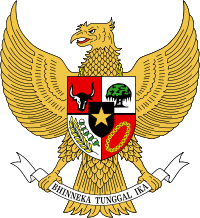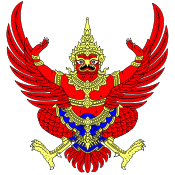Far East
| Far East Countries | |||||||||||||||
|---|---|---|---|---|---|---|---|---|---|---|---|---|---|---|---|
 |
|||||||||||||||
| Location of the Far East narrow definition, to the exclusion of South Asia and Western China |
|||||||||||||||
| Chinese name | |||||||||||||||
| Traditional Chinese | 遠東 | ||||||||||||||
| Simplified Chinese | 远东 | ||||||||||||||
| Literal meaning | Far East | ||||||||||||||
|
|||||||||||||||
| Filipino name | |||||||||||||||
| Tagalog | Silanganan (poetic) Malayong Silangan (literal) |
||||||||||||||
| Indonesian name | |||||||||||||||
| Indonesian | Timur Jauh | ||||||||||||||
| Japanese name | |||||||||||||||
| Kanji | 極東 | ||||||||||||||
|
|||||||||||||||
| Korean name | |||||||||||||||
| Hangul | 극동 | ||||||||||||||
| Hanja | 極東 | ||||||||||||||
|
|||||||||||||||
| Malay name | |||||||||||||||
| Malay | Timur Jauh | ||||||||||||||
| Burmese name | |||||||||||||||
| Burmese | အရှေ့ဖျား ဒေသ IPA: [ʔəʃe̯bjá dèθa̯] |
||||||||||||||
| Portuguese name | |||||||||||||||
| Portuguese | Extremo Oriente | ||||||||||||||
| Russian name | |||||||||||||||
| Russian | Дальний Восток | ||||||||||||||
| Thai name | |||||||||||||||
| Thai | ตะวันออกไกล Tawan-oak klai |
||||||||||||||
| Vietnamese name | |||||||||||||||
| Quốc ngữ | Viễn Đông | ||||||||||||||
| Chữ nôm | 遠東 (Sino-Vietnamese vocabulary) | ||||||||||||||
| Hán tự | 遠東 | ||||||||||||||
The Far East is a term used in English (with equivalents in various other languages of Europe and Asia, Chinese 遠東 yuǎn dōng literally translating to "far east") mostly equivalent to East Asia (including the Russian Far East) and Southeast Asia,[1] sometimes to the inclusion of South Asia for economic and cultural reasons.[2]
"Far East" came into use in European geopolitical discourse in the 19th century, denoting Eastern Asia as the "farthest" of the three "easts", beyond the Near East and the Middle East. For the same reason, ancient Chinese people called western countries "Tàixī (泰西)"—i.e. anything further west than India. The term is no longer commonly used, as it connotes the "orientalism" of the 19th century as described by Edward Said. Today terms like East Asia and the Orient are more common.[3]
Contents |
Popularisation
The term Far East was popularized in the English language during the period of the British Empire as a blanket term for lands to the east of British India. Prior to World War I, the Near East referred to relatively nearby lands of the Ottoman Empire, Middle East to northwestern South Asia and Central Asia, and Far East for countries along the western Pacific Ocean and countries along the eastern Indian Ocean. Many European languages have analogous terms, such as the French Extrême-Orient, Spanish Extremo Oriente, Portuguese Extremo Oriente, German Ferner Osten, Italian Estremo Oriente, Polish Daleki Wschód, and Dutch Verre Oosten.
Cultural as well as geographic meaning

Significantly, the term evokes cultural as well as geographic separation; the Far East is not just geographically distant, but also culturally exotic. It never refers, for instance, to the culturally Western nations of Australia and New Zealand, which lie even farther to the east of Europe than East Asia itself. This combination of cultural and geographic subjectivism was well illustrated in 1939 by the Prime Minister of Australia, R. G Menzies. Reflecting upon his country's geopolitical concerns with the onset of war, Menzies commented that:
"The problems of the Pacific are different. What Great Britain calls the Far East is to us the near north."[4]
Far East in its usual sense is comparable to terms such as the Orient, which means East; the Eastern world; or simply the East. South East Asia and the Russian Far East might now be included in the Far East to some extent due to recent Chinese migration to Russia, and the Korean diaspora in Russia.
Concerning the term, John K. Fairbank and Edwin O. Reischauer, professors of East Asian Studies at Harvard University, wrote (in East Asia: The Great Tradition): "When Europeans traveled far to the east to reach Cathay, Japan and the Indies, they naturally gave those distant regions the general name 'Far East.' Americans who reached China, Japan and Southeast Asia by sail and steam across the Pacific could, with equal logic, have called that area the 'Far West.' For the people who live in that part of the world, however, it is neither 'East' nor 'West' and certainly not 'Far.' A more generally acceptable term for the area is 'East Asia,' which is geographically more precise and does not imply the outdated notion that Europe is the center of the civilized world."[5]
The term remains in use, alongside more specific terms such as East Asia and Southeast Asia, or Pacific Rim, and it features in the names of many Asian-based commercial enterprises and institutions. Examples include: Far Eastern National University in Vladivostok, Far Eastern University in the City of Manila, South Korean's Far East University, and the Hong Kong-based Far Eastern Economic Review. Furthemore, the United Kingdom and United States of America have historically used Far East for several military units and commands in the region:
- British Far East Command
- RAF Far East Air Force
- U.S. Far East Air Force
- The U.S. Far East Network
Territories and regions conventionally included under the term Far East
Cities
See also
- Sinosphere
- Indosphere
- Four Asian Tigers
- East Asia
- South Asia
- Southeast Asia
- Russian Far East
- Spanish East Indies
- Far Eastern Economic Review
Notes
- ↑ AskOxford: Far East
- ↑ The 'Far Eastern Economic Review' for example covers news from India and Sri Lanka.
- ↑ Reischauer, Edwin and John K Fairbank, East Asia: The Great Tradition, 1960.
- ↑ Broadcast Speech by Mr R.G. Menzies, Prime Minister
- ↑ Reischauer, Edwin and John K Fairbank, East Asia: The Great Tradition, 1960.
- ↑ Continental regions as per UN categorisations (map), except 12. Depending on definitions, various territories cited below (notes 6, 11-13, 15, 17-19, 21-23) may be in one or both of Asia and Europe, Africa, or Oceania.
- ↑ The state is commonly known as simply "China", which is subsumed by the eponymous entity and civilisation (China). Figures given are for mainland China only, and do not include Hong Kong, Macau, and Taiwan.
- ↑ Includes PRC-administered area (Aksai Chin and Trans-Karakoram Tract, both territories claimed by India), Taiwan is not included Tibet and Xinjiang excluded).
- ↑ Information listed is for mainland China only. The Special Administrative Regions of the PRC: Hong Kong and Macau are excluded. In addition, the island territories under the control of the Republic of China, which includes the islands of Taiwan, Kinmen, and Matsu are also excluded (Tibet and Xinjiang excluded).
- ↑ Hong Kong is a Special Administrative Region (SAR) of the PRC.
- ↑ Macau is a Special Administrative Region (SAR) of the PRC.
- ↑ Figures are for the area under the de facto control of the Republic of China (ROC) government, commonly referred to as Taiwan. Claimed in whole by the PRC; see political status of Taiwan.
- ↑ East Timor is often considered a transcontinental country in Southeastern Asia and Oceania.
- ↑ Indonesia is often considered a transcontinental country in Southeastern Asia and Oceania; figures do not include Irian Jaya and Maluku Islands, frequently reckoned in Oceania (Melanesia/Australasia).
- ↑ Russia is generally considered a transcontinental country in Eastern Europe (UN region) and Northern Asia; population and area figures are for Asian portion only.
- ↑ 16.0 16.1 Only includes the area of Far Eastern Federal District.
References
- Ankerl, Guy (2000). Coexisting Contemporary Civilizations: Arabo-Muslim, Bharati, Chinese, and Western. Geneva: INU Press. ISBN 2-88155-004-5.
- Whitaker, Brian (February 23, 2004). "From Turkey to Tibet". The Guardian.
|
|||||||||||||||||||||||||||||||||||||













